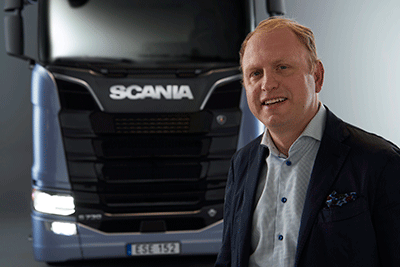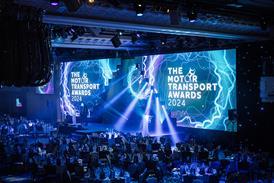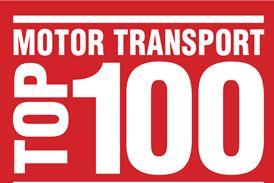
Henrik Henriksson took over the top job as president and CEO of Scania in January 2016, succeeding Per Hallberg, who had been filling the role since April 2015 when Martin Lundstedt defected to head up rival Volvo.
Aged just 45, Henriksson was previously head of sales and marketing, having joined Scania as a management trainee in 1997.
“It is the first time in Scania’s history that we have a non-engineer as CEO,” he says. “It is a sign of the times and the transformation that has taken place over the last 25 or 30 years. We have become a very customer-centric company and we have spent a lot of time in the past 15 years trying to really understand our customers’ needs.”
Henriksson says that while Scania is still very much driven by engineers making the best possible products, they do not work in isolation.
“The way we work is that sales and marketing own the product and services portfolio and place the demand of what is needed on R&D and production,” Henriksson says. “Thirty years ago it was different and when the engineers were done with the product they told the sales guys ‘this is what you will sell’.
“Now it is more of a team effort and for the Next Generation trucks that are coming out now we started working together in 2004 on what we needed. I’m sure we will benefit from that because it is the first time we have a product and services offering geared to specific customer needs.”
High prices
Although the sales and marketing team at Scania must often hear customers complain about the high price of the trucks, Henriksson insists he would never ask R&D to cut costs.
“What I tell my engineers is ‘load on more product costs because I want better performance’, and I know that performance costs,” he says. “I don’t mind if you load another £1,000 on the cost if I get better fuel economy, reliability or load capacity. We will never compete on the price tag but we are the best in the world when we talk about total operating economy.
“The customers are willing to pay a premium because we give them better profitability during the lifetime of the vehicle.”
The company’s modular approach to truck design means it can produce vehicles to match each operator’s application, making the vehicles as productive as possible.
“Because we really understand the customer’s business we can tailor-make our offering,” Henriksson says. “Having a standard product with one size fits all is not good enough. We are fanatical about improving the customer’s profitability, especially by cutting fuel consumption. Finally, Scania’s quality and reliability is reflected in our customers’ uptime and our trucks’ residual values.”

Uptime is about more than just producing the toughest and most reliable truck however. “What are becoming more important are services, where we differentiate ourselves more and more every year,” says Henriksson. “We provide a strong network of workshops where operators get attention immediately and a quick turnaround, and where we fix the problem first time.”
Scania had its best-ever year in the UK in 2016, taking 20% of the market over 16 tonnes with record sales of 7,283 vehicles, and claiming market leadership in 3-axle tractors and the construction sector.
“We don’t have a 20% share of any other market in the world,” says Henriksson. “That comes down to our service network in the UK and the reputation we have in the market.
“We have potential to do more in the distribution segment. There are demands coming from the big cities like London for specific technical requirements and we could be bit quicker from a product development point of view to gain more of that market.
“We should also be able to increase our share in segments like waste management.”
Alternative fuels
Many Scania trucks will now run on biogas or biodiesel with no effect on warranties, and it is working on hybrid and electric drivelines.
“New types of fuel will become more of a requirement and I want us to take a bigger part of that market,” says Henriksson.
The Next Generation R-series and S-series tractors launched last year have been well received, and UK operators are queuing up to get their hands on the new trucks, said to be 5% more fuel efficient than their predecessors. Henriksson denies that righthand drive examples of the new cabs are in short supply however.
“We build righthand drive vehicles on exactly the same production lines and with our modular system there is no limitation on them,” he says. “The orderbook for the new trucks is strong but so far we have been able to match the demand with output. We will swap our industrial system to the new vehicles over the next two years. The Swedish factory will switch over to the new cabs in the first half of next year and our factories in France and Holland will come in next followed by the big factory in Brazil.
“We will not launch a new truck into any market until we know we can handle demand.”
In the UK Henriksson does not expect Next Generation sales to overtake the current models until early next year as there are still some big orders for the existing range to wash through the system. But he says that availability of current generation trucks will become “limited” by the middle of 2017, adding: “Certain models will be turned off during this year.”
With the launch of the Next Generation tractors, Scania dropped the Topline option, and Henriksson expects that the spacious new flat-floor S-series will effectively replace the Topline as the flagship truck while the R-series will be the volume seller.
“But we really don’t know,” he says. “When we started with the R cab, we expected Topline to be small volume but in some markets it became the standard.”

Henriksson is not concerned that Volvo currently leads the horsepower race with its 750hp F16, 20hp more than Scania’s maximum power offering.
“It is all about finding the right specification for the customer, and Euro-6 changed the game in that you are now really paying a penalty on fuel consumption if you have too much horsepower,” he says. “We have the increased the horsepower ratings of the 13 litre engines and invested in renewable fuel engines. There are applications where you need high horsepower – in Finland for example customers can run above 90 tonnes and in Sweden they can run above 70 tonnes. So in the future we may need more horsepower but right now we are happy with what we have.”
Henriksson remains 100% committed to Scania’s trademark V8 engine, launched in 1969, and now putting out up to 730hp from its 16.4 litres. “It’s part of our heritage and image,” he says. “In tough operations it is also unbeatable on reliability and fuel consumption. And it has fantastic residual values.”
Some surprises
Scania chose to launch the Next Generation vehicles in its long haul tractor sector, and these will be followed by construction, distribution and special applications such as fire engines and military vehicles.
“We cannot run with parallel programmes for too long,” says Henriksson. “Those will be the segments you will see Next Generation coming in one by one.
“This is where you will see some surprises because we now have a product that has been developed much more with our customers than in the past. In these segments we have maybe not been as strong as in haulage but we are moving our position forward.”
Despite the vast scale of their manufacturing operations, Henriksson says he is not concerned about cheap Chinese trucks coming into Europe any time soon.
“We have established a requirement from our customers in Europe and an expectation of a certain quality that is translated into how reliable and fuel efficient the products are,” he says. “With our customers’ profit margins so tight, using a truck which is 5% or 10% less fuel efficient – which the Chinese are today compared with European products – would mean they are not competitive any more. Or if you have five days of unplanned stoppages in a year that too kills the profitability. They also have to build up a European service network.”
“So it will be difficult for them. But long term, there will be at least one Chinese player who will become a global player and eventually they will enter our market. First they need to go through a consolidation phase in China to single out the strong players. We should not be naïve – we meet them in other parts of the world where conditions are different. Their trucks are designed to do fewer kilometres and are cheaper and sometimes that suits economies where the focus is more on cashflow than long term profitability.”
Looking ahead, Henriksson foresees new technology such as electrification and autonomous vehicles moving from prototype to mainstream within a generation.
“Electrification is happening on the bus side and it may come on trucks,” he says. “Autonomous vehicles may come into play in 10 years’ times in certain applications like mining and ports. I think we will see at least driverless platooning trucks in dedicated lanes on the highway in my lifetime. We need the technology, legislation and public acceptance for it and that will take different periods of time in different countries, but it will come.”













